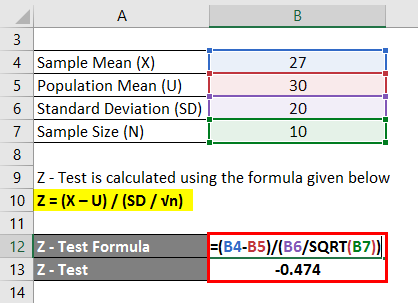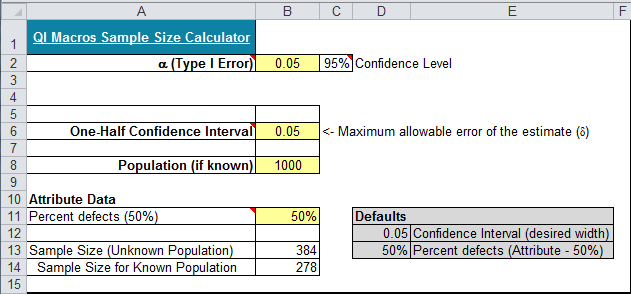

For your convenience, we describe both versions. There is a version of a t-test which can be applied without the assumption of homogeneity of variance: it is called a Welch's t-test.
SAMPLE SIZE HYPOTHESIS TEST CALCULATOR FREE
The degrees of freedom are the number of observations in a sample that are free to vary as we estimate statistical parameters. The exact formula depends on the t-test type - check the sections dedicated to each particular test for more details.ĭetermine the degrees of freedom for the t-test: Use a one-tailed t-test if you want to test whether this mean (or difference in means) is greater/less than the pre-set value.įormulas for the test statistic in t-tests include the sample size, as well as its mean and standard deviation. Use a two-tailed t-test if you only care whether the population's mean (or, in the case of two populations, the difference between the populations' means) agrees or disagrees with the pre-set value.
SAMPLE SIZE HYPOTHESIS TEST CALCULATOR HOW TO
These next steps will tell you how to calculate the p-value from t-test or its critical values, and then which decision to make about the null hypothesis. So, you've decided which t-test to perform.

This test is sometimes referred to as an independent samples t-test, or an unpaired samples t-test.Ī paired t-test is used to investigate the change in the mean of a population before and after some experimental intervention, based on a paired sample, i.e., when each subject has been measured twice: before and after treatment. The average difference in the results of a math test from students at two different universities.The average difference in weight gain in two groups of people: one group was on a high-carb diet and the other on a high-fat diet.

In particular, you can use this test to check whether the two groups are different from one another. The average weight of people from a specific city - is it different from the national average?Ĭhoose the two-sample t-test to check if the difference between the means of two populations is equal to some pre-determined value, when the two samples have been chosen independently of each other.The average volume of a drink sold in 0.33 l cans - is it really equal to 330 ml?.

Your choice of t-test depends on whether you are studying one group or two groups:Ĭhoose the one-sample t-test to check if the mean of a population is equal to some pre-set hypothesized value.


 0 kommentar(er)
0 kommentar(er)
